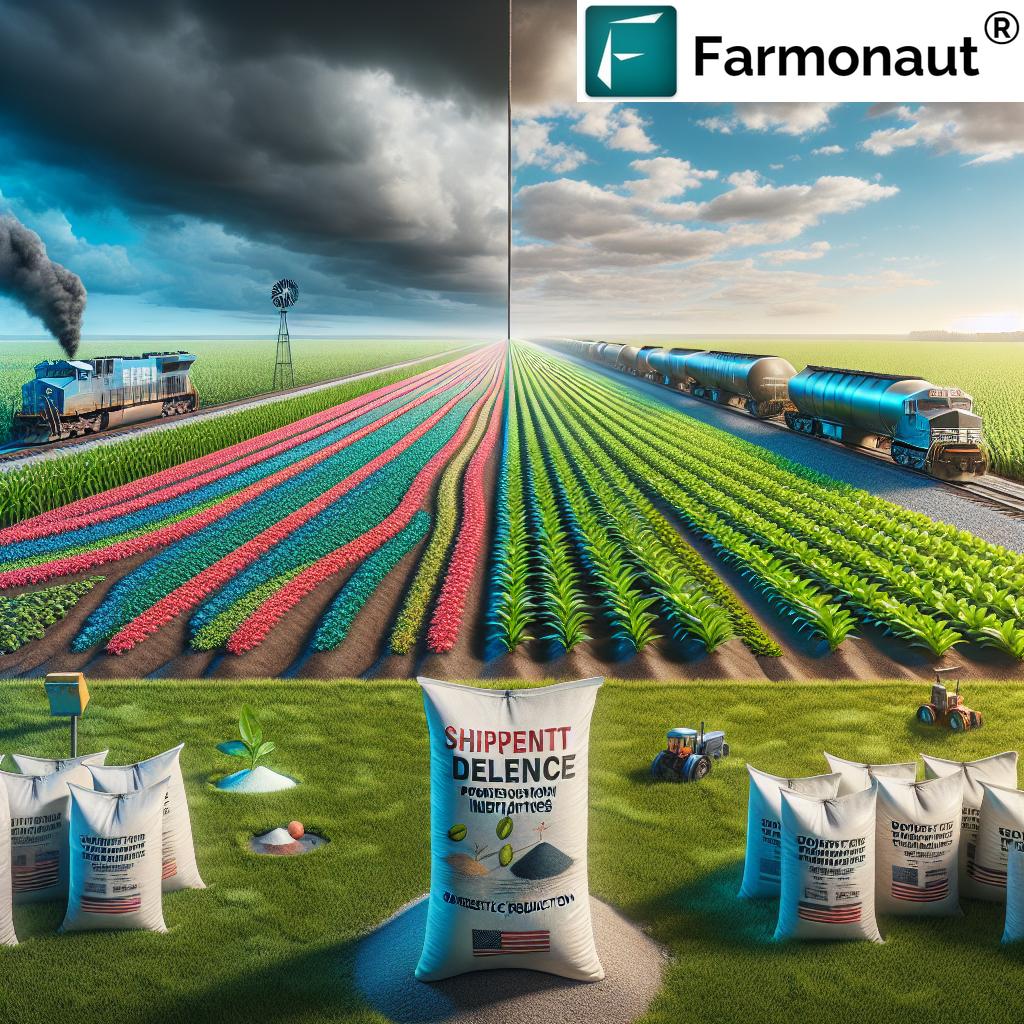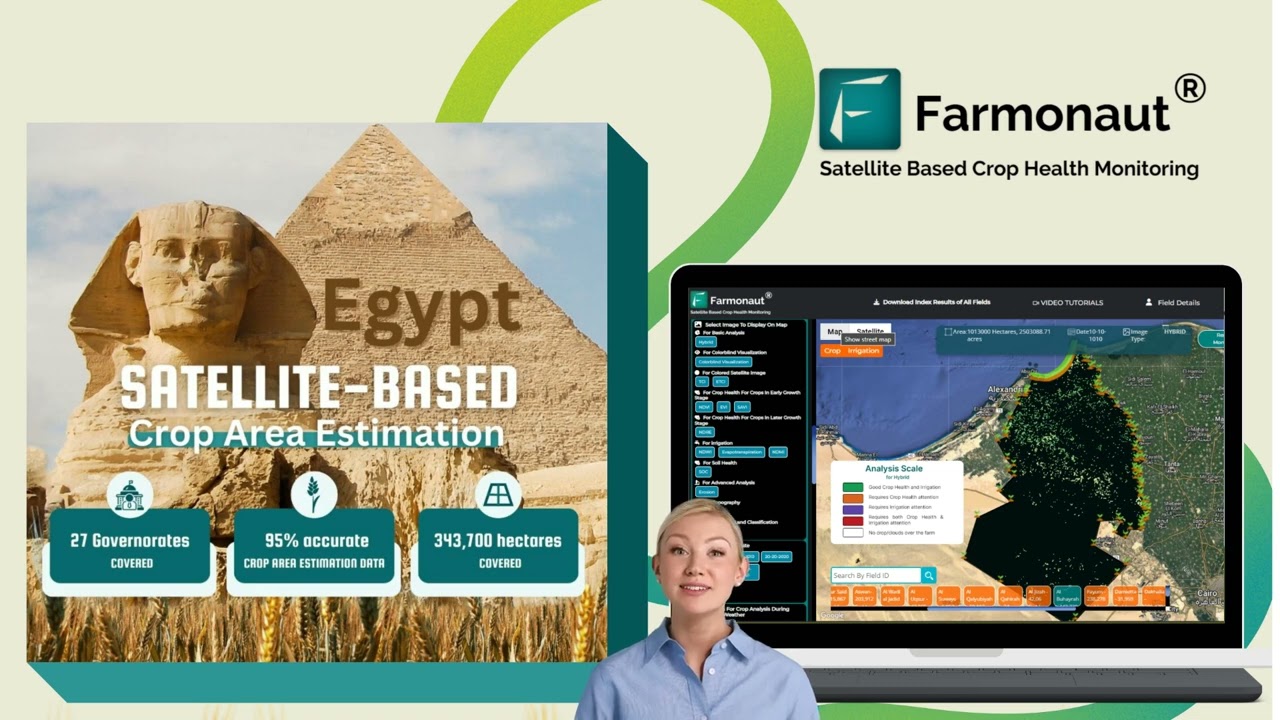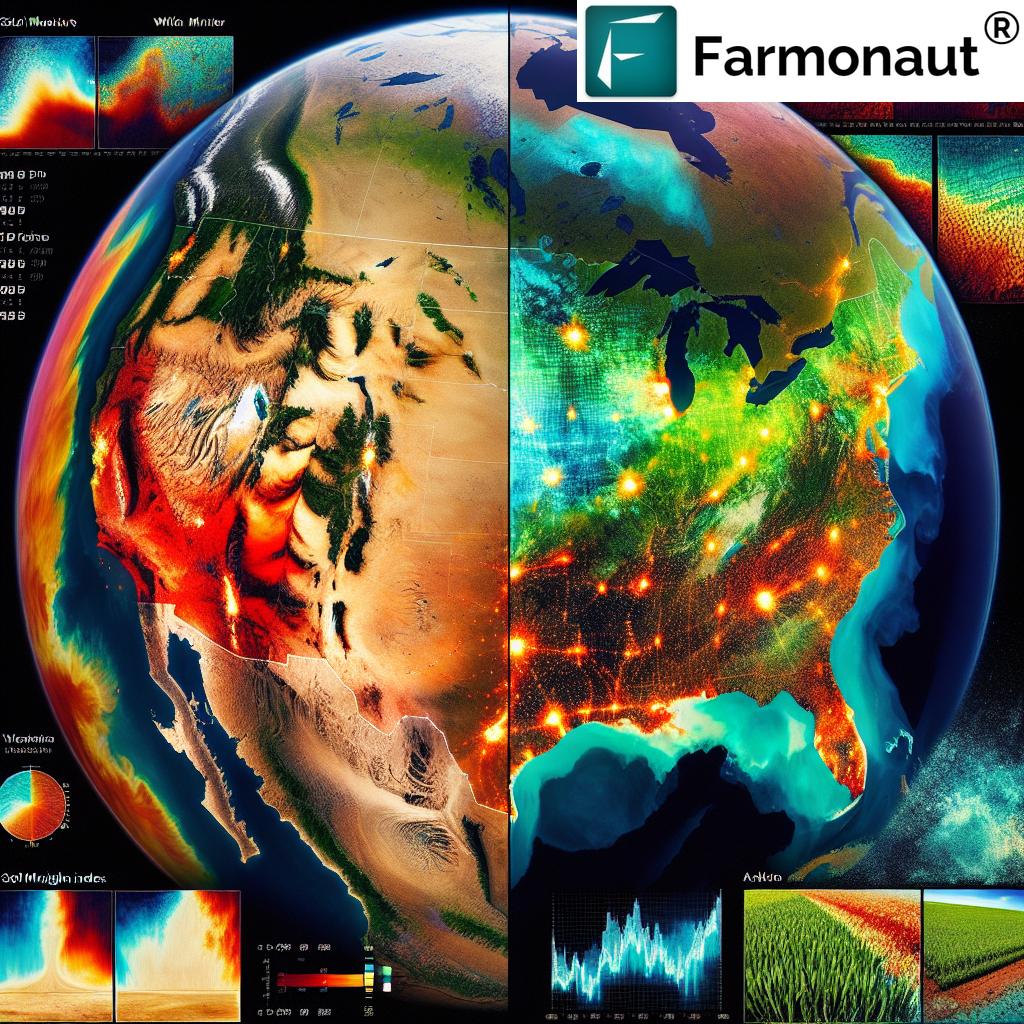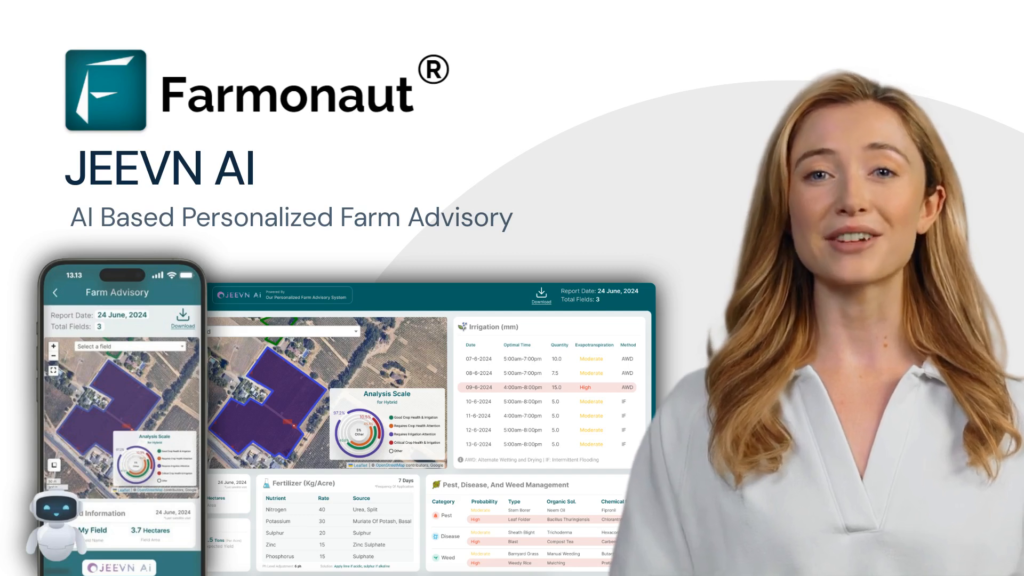Price of Fertilizer 2025: US Trends & Challenges
“U.S. fertilizer prices are projected to rise by 8% in 2025 due to ongoing supply chain disruptions.”
Table of Contents
- Fertilizer Prices 2025: Setting the Stage
- Current Fertilizer Price Trends in the United States
- Key Factors Impacting Fertilizer Price Fluctuations
- Geopolitical Impact on Fertilizer Costs and Market
- Agricultural Supply Chain Disruptions in 2025
- Year-Over-Year Fertilizer Price Comparison Table
- Government Initiatives: Domestic Fertilizer Production and Investments
- Sustainable Fertilizer Alternatives and Practices
- How Farmonaut Empowers Precision Agriculture in Challenging Times
- Market Outlook: Fertilizer Price Forecast & Future Considerations
- Frequently Asked Questions
Fertilizer Prices 2025: Setting the Stage
As we progress through June 2025, the fertilizer market in the United States and globally is undergoing significant price fluctuations. These shifts are influenced by an intricate mix of geopolitical tensions, agricultural supply chain disruptions, evolving trade policies, and an accelerated move toward sustainable agricultural practices. The costs and availability of major fertilizer types—Nitrogen, Phosphate, Potash, Urea—are under the spotlight as farmers, agribusinesses, and stakeholders navigate an industry in flux.
Our comprehensive blog post delves into the current fertilizer price trends, key market developments, and the challenges and opportunities facing the American agricultural, farming, and forestry sectors in 2025. From the impact of 25% fertilizer tariffs and supply chain issues to domestic production initiatives and the advent of sustainable fertilizer alternatives, we cover the landscape in detail, helping you make informed decisions in a rapidly changing environment.
Focus Keyword Early Placement: fertilizer prices 2025
Current Fertilizer Price Trends in the United States: 2025 Insights
The United States retail fertilizer market is reflecting mixed patterns in early 2025. As we analyze average prices per ton for key fertilizer types, clear signals of market volatility emerge:
- Urea prices averaged $492 per ton in January 2025, showing a modest increase compared to December 2024.
- Diammonium phosphate (DAP) prices stood at $739 per ton for the same period, suggesting a plateau but at elevated levels.
- Potash prices decreased to $443 per ton, indicating a downward trend influenced by a mix of market and supply factors.
These fertilizer price trends are not isolated but impacted by wider global market trends, lingering supply chain disruptions, and a challenging geopolitical backdrop. The interplay of these elements is reshaping price indices and availability across the agriculture and farming sectors.
Key Point: Price movements for fertilizers are central to the profitability and strategic planning of American farmers in 2025.
Key Factors Impacting Fertilizer Price Fluctuations in 2025
Several factors have collectively influenced fertilizer price fluctuations in the United States and globally as of June 2025. Understanding these drivers is essential for anticipating both short-term price volatility and long-term market shifts.
1. Geopolitical Tensions and Tariffs
- The US government imposed 25% tariffs on most Canadian products including fertilizers in March 2025, triggering a ripple effect throughout the market.
- Although some fertilizers received temporary reprieves, ongoing trade tensions are disrupting fertilizer supply chains and escalating costs especially for imports.
- Retaliatory measures from both Canada and China have targeted American agricultural exports, compounding market strain.
2. Supply Chain Disruptions & Natural Disasters
- Weather-related delays in the US and Australia have hindered fertilizer sales.
- Elevated natural gas prices have sharply increased production costs, particularly for nitrogen-based fertilizers.
- These supply chain issues have markedly contributed to price volatility and availability.
3. Evolving Agricultural Practices and Sustainable Solutions
- More farmers are adopting precision agriculture and biological products to reduce fertilizer input costs and improve soil health.
- Demand for sustainable fertilizer alternatives and variable-rate application technology is accelerating, seeking efficiency and environmental benefits.
Collectively, these factors have impacted fertilizer prices and contributed to major challenges and opportunities within the wider agricultural industry.
“Global fertilizer tariffs in 2025 could impact over $2 billion in U.S. agricultural imports and exports.”
Geopolitical Impact on Fertilizer Costs and the US Market
Geopolitical tensions in 2025 are at the epicenter of fertilizer price increases and market uncertainty. The US has imposed 25% tariffs on major Canadian products since March 2025, directly affecting fertilizer imports—particularly potash, of which an estimated 85% is sourced from Canada. Although some fertilizers received reprieves, the overall trade friction continues to disrupt established supply chains.
- American farmers are experiencing increased input costs just as crop commodity prices have softened.
- Retaliatory measures targeting US agricultural exports from Canada and China have further constrained market demand.
- The cumulative effect is higher fertilizer costs, lower potential profit margins, and added complexity in planning fertilizer applications for the season.
References:
US, Canadian farmers face soaring fertilizer prices amid Trump trade war,
US farmers face higher costs, fewer markets from tariffs, farm groups warn.
Agricultural Supply Chain Disruptions in 2025: Effects on Fertilizer Market
Supply chain disruptions, magnified by geopolitical issues and natural disasters, have become persistent challenges for the fertilizer industry and farmers in the United States and globally in 2025.
- Natural disasters (e.g., flooding, hurricanes) have delayed critical fertilizer deliveries and sales windows, putting pressure on seasonal crop plans.
- Weather-related delays in Australia, a major fertilizer supplier, have shaped international availability and cost structure.
- The recent increase in natural gas prices—a fundamental input for nitrogen fertilizer production—has notably raised manufacturing costs, influencing global prices.
These overlapping disruptions have strained supply chains and boosted input prices, mounting further pressure on already tight farm finances and contributing to fertilizer price fluctuations.
Year-Over-Year Fertilizer Price Comparison Table: 2024 vs. 2025 (Estimated)
To offer a clear perspective on fertilizer market trends, below is a comparative table featuring estimated average prices per ton for key fertilizer types in 2024 (for reference) and anticipated 2025 values. This table encapsulates percentage changes and highlights critical factors—such as tariff impacts and noted supply chain issues—which have influenced the market.
| Fertilizer Type | 2024 Price (USD/ton) | Estimated 2025 Price (USD/ton) | % Change | Notes |
|---|---|---|---|---|
| Urea | $478 | $492 | +2.9% | Higher energy costs; mild tariff exposure |
| Diammonium Phosphate (DAP) | $728 | $739 | +1.5% | Stable, some trade friction |
| Potash | $462 | $443 | -4.1% | 85%+ imported from Canada, tariff-exempt but supply strained |
| Nitrogen (Overall) | $565 | $578 | +2.3% | Natural gas price spikes; production scalebacks in Europe |
Note: Numbers are indicative estimates based on early 2025 reports and market projections.
Government & USDA Response: Domestic Fertilizer Production Initiatives
In response to rising fertilizer costs and market volatility, the US Department of Agriculture (USDA) launched significant initiatives to bolster domestic fertilizer production capacity and alleviate financial pressures on farmers.
- As of December 2024, over $116 million in investments were allocated across nine states to expand fertilizer production facilities.
- In October 2024, the USDA allocated another $120 million to fund six fertilizer production projects.
- These investments are intended to increase competition, lower input costs, and reduce reliance on foreign imports—aligning with the broader goal of securing the agricultural supply chain.
Reference:
USDA Press Release, Dec 2024, Domestic Fertilizer Investments
USDA Press Release, Oct 2024
Initiatives such as these support the improvement of US plantation and forestry management, particularly when combined with agricultural technology that reinforces resource efficiency.
Sustainable Fertilizer Alternatives and Practices: The Road Ahead
The surge in synthetic fertilizer prices has accelerated the transition toward sustainable fertilizer alternatives and data-driven agricultural practices in 2025.
- Biological products such as biofertilizers (e.g., nitrogen-fixing bacteria, mycorrhizae) offer reduced dependency on traditional fertilizers, enhance soil health, and lessen environmental impact.
- Biostimulants and organic amendments are gaining traction, boosting nutrient-use efficiency and resilience to climate stress.
- The adoption of precision agriculture techniques—including variable-rate technology and soil sampling—has enabled targeted fertilizer application, thereby minimizing waste and optimizing crop yields.
According to industry reports, early adopters of site-specific management technologies have achieved up to 15% savings in fertilizer input costs over three years, underscoring the opportunities for farmers to thrive despite price increases.
Related Reading:
Sustainable fertilizer alternatives in the face of price increases
Discover Farmonaut’s carbon footprinting services enable monitoring of farm emissions, further supporting compliance with sustainable agricultural practices.
For corporations and supply chain managers, Farmonaut’s blockchain-based traceability solutions introduce much-needed transparency, enhancing trust in food and commodity origin—an essential component in a sustainable, responsible supply chain.
How Farmonaut Empowers Precision Agriculture in Challenging Times
At Farmonaut, we recognize that periods of fertilizer price volatility and supply chain disruptions require a proactive, data-driven approach for all stakeholders—from individual farmers to regional agribusinesses and governments. Our advanced, satellite-based precision agriculture technology is designed to help you:
- Monitor crop health in real-time using NDVI and multi-spectral analysis, targeting fertilizer applications where they’re most needed.
- Utilize Jeevn AI for timely, personalized agronomic advice—ensuring resource allocation aligns with fast-changing cost and market conditions.
- Reduce fertilizer waste and optimize input use through satellite-backed soil moisture analytics and weather forecasting.
- Leverage blockchain traceability for full supply chain transparency, bridging trust gaps from farm to shelf.
- Support environmental stewardship with on-demand carbon footprinting, contributing to industry sustainability targets even in times of market pressures.
Our user-friendly platform, available as a web app, Android, and iOS app, empowers American and global farmers to make smarter, data-driven choices—protecting profitability and promoting sustainable practices in an era of fertilizer price uncertainty.
Find out how Farmonaut’s fleet management tools can help you cut operational costs and keep your agricultural logistics running smoothly, regardless of external disruptions.
For software developers and corporate clients, our API gateway and developer documentation make integration seamless—bring satellite insights directly into your IT systems to enhance internal analytics and resource reporting.
If you operate at scale, our large-scale farm management platform provides multi-hectare analytics and advanced decision support features tailored for big farm teams and government bodies.
Access satellite-based crop loan and insurance verification with Farmonaut to streamline agricultural credit and protect against fraud.
Market Outlook: Fertilizer Price Forecast & Future Considerations for the US
Looking ahead, the fertilizer price forecast for the United States and the global market suggests continued volatility through late 2025 and into 2026.
- Geopolitical tensions, especially between key trading partners such as the US, Canada, and China, are set to persist and could trigger further trade policy changes impacting the agricultural supply chain.
- Domestic production initiatives may begin to show positive effects—potentially stabilizing fertilizer price increases and insulating the US from global supply shocks.
- Sustainable fertilizer alternatives and precision agriculture tech will see broader adoption as farmers aim to lower input costs, uphold yields, and support environmental goals.
- Stakeholders should monitor policy developments, diversify sourcing, and keep abreast of agri-tech advancements to maintain resilience.
The landscape is expected to reward proactive adaptation—be it with real-time monitoring via satellite technology (such as Farmonaut’s solutions), or pivots to new fertilizer sources and crop planning strategies. Challenges remain, but so do opportunities for those who invest in knowledge and innovation.
Stay updated—download the Farmonaut app today to keep your farming operation on the cutting edge.
Frequently Asked Questions: Fertilizer Prices 2025
Q1: What are the main factors behind fertilizer price increases in 2025?
Fertilizer price increases have primarily been driven by trade policy changes (notably, US tariffs on Canadian fertilizer imports), geopolitical tensions, supply chain disruptions (including natural disasters and energy cost spikes), and a global push towards sustainability which is reshaping demand and supply patterns.
Q2: How much have urea and potash prices changed from 2024 to 2025?
According to market reports, urea has increased from $478 to $492 per ton (+2.9%), while potash has decreased from $462 to $443 per ton (-4.1%) between 2024 and 2025.
Q3: How are US government initiatives addressing fertilizer market challenges?
The USDA has announced significant investments in fertilizer production facilities—$116 million in December 2024 and $120 million in October 2024—across several states. These efforts aim to increase domestic production, boost market competition, and lower **costs** for US farmers.
Q4: What sustainable fertilizer alternatives are becoming popular?
Biofertilizers, biostimulants, organic matter, and precision agriculture techniques are key sustainable alternatives. These reduce dependency on synthetic inputs, improve soil health, and optimize resource use for greater efficiency and environmental stewardship.
Q5: How can technology help me manage fertilizer costs and volatility?
Technology like the Farmonaut platform uses satellite imagery, AI, and blockchain to monitor crop and soil health, offer timely advice, optimize input usage, and provide supply chain traceability. This helps mitigate costs, boost yields, and support compliance with modern farming best practices.
Conclusion: Adapting for Success Amidst Fertilizer Market Fluctuations
The fertilizer market in 2025 is emblematic of how geopolitical influences, rapid policy changes, and evolving agricultural practices converge to disrupt, but also create, opportunities across farming and forestry sectors worldwide. Fertilizer prices are forecast to remain fluid, particularly as global supply chains grapple with ongoing disruptions and governments endeavor to secure domestic production capacity.
By keeping abreast of global fertilizer market trends, embracing sustainable alternatives, and integrating advanced agricultural technology platforms like Farmonaut, farmers and agribusinesses can build the resilience needed to thrive in these challenging times.
Stay vigilant, stay informed, and let innovation guide your path to sustainable success in agriculture.






















